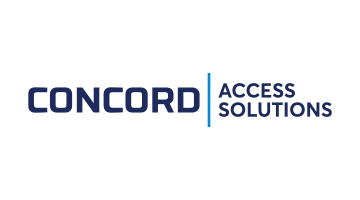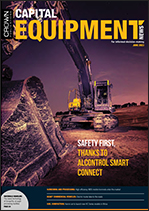 ALCONTROL SMART CONNECT: A simple change to where employees enter their workspace or jobsite and do a lot for general safety. Testing for alcohol is one of those things.
ALCONTROL SMART CONNECT: A simple change to where employees enter their workspace or jobsite and do a lot for general safety. Testing for alcohol is one of those things.
This new version of ALCOCONTROL Smart Connect addresses significant integrability challenges experienced in the past, between the breathalyser device, the biometric system and the turnstile. “For industries where repeated positive alcohol testing impacts work performance, and can result in job losses, voluntary alcohol testing is an important safety measure,” explains Rhys Evans, MD at ALCO-Safe.
 “Voluntary alcohol testing is for employees who occasionally overindulge, giving them the opportunity to go home and avoid endangering themselves or their colleagues, should they experience a positive breath alcohol result,” he adds.
“Voluntary alcohol testing is for employees who occasionally overindulge, giving them the opportunity to go home and avoid endangering themselves or their colleagues, should they experience a positive breath alcohol result,” he adds.
“Where previously it was difficult to get a technician out to remote mining locations for installation, ALCONTROL is now extremely simple to install, and can be done by almost anyone with basic technical skills,” Evans notes.
It introduces Wiegand, RS485, LAN, Wi-Fi and Bluetooth connectivity and a new communication protocol, and the device is easily compatible with any of the existing biometric employee identification and access control system companies may already have in place. The name ALCONTROL Smart Connect leads to its focus on easy connectivity and integration.
The ALCONTROL unit has an option for camera installation that can be used for identity verification purposes, and along with a new RS-485 communication port, the system can be easily integrated with facial recognition technology.
All of these features make it easy for companies to track positive alcohol test results in order to monitor for absenteeism and abuse of the voluntary testing system, while streamlining HR disciplinary processes related to the company’s alcohol and substances policy.
NEW TROMMELS: It’s a big feather in the cap for ELB Equipment to have completed the minerals processing equipment cycle locally with the introduction of MDS equipment. MDS, a Terex brand, added a complete range of high-efficiency trommels that could change screening in South Africa.
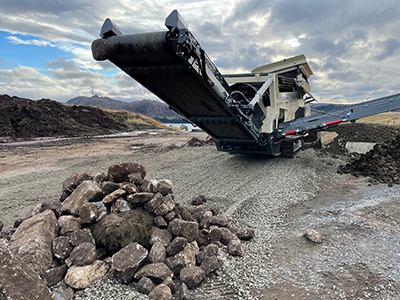 ELB Equipment’s own Powerscreen scalpers and screens already dominate the local market, but the addition of MDS, specifically their trommels, is bound to close the circuit for miners who are already familiar with high-quality mineral processing offerings.
ELB Equipment’s own Powerscreen scalpers and screens already dominate the local market, but the addition of MDS, specifically their trommels, is bound to close the circuit for miners who are already familiar with high-quality mineral processing offerings.
MDS track, static and recycling trommels, as well as apron feeders, are quick and can handle a wide range of media including blasted rock and riprap, as well as varying substrates such as clay, limestone and even recycled concrete rubble.
The new trommels’ charm lies in the ability to speed up processing and ability to handle oversized materials.
ELB Equipment divisional director, Wakefield Harding, says the range of static and tracked trommels is unmatched in the local market and is simply not available as standard production machines elsewhere. This means it will introduce a new way of doing things in the local market and is bound to turn up production volumes while increasing profitability on many new and existing plants in southern Africa.
MDS tracked and mobile units especially can be game changers bringing the speed and versatility of trommels to sites wherever they are needed. Trommels can separate up to four streams of aggregates quickly and efficiently starting with soil and fines at the feed end moving through to larger rocks and oversize rocks up to 1,5m at the discharge end.
It is this rugged ability of the MDS designed and manufactured trommels that makes them unique as they can shorten the processing equipment chain onsite – either direct from blasting and loading or from a primary crusher or even recycled materials and composting. The addition also supports ELB Equipment’s growth strategy to expand its offering into new crushing, screening and environmental industries with products that complement its existing portfolio.
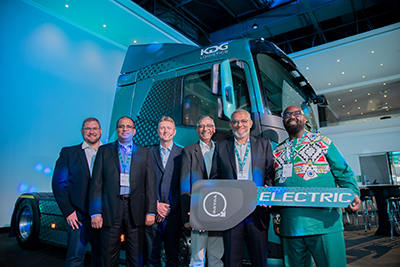 ELECTRIC EXTRA HEAVY TRUCKS: “Volvo Trucks has been committed to social, environmental, and economic responsibility since the start of our company,” said Waldemar Christensen, managing director of Volvo Trucks South Africa.
ELECTRIC EXTRA HEAVY TRUCKS: “Volvo Trucks has been committed to social, environmental, and economic responsibility since the start of our company,” said Waldemar Christensen, managing director of Volvo Trucks South Africa.
“Now, protecting the environment is the biggest challenge we face. The Volvo Group is a leading force in the shift towards the electrification of the transportation, mobility, and equipment sectors, making a real impact on our customers’ efforts to reduce their carbon footprint.”
While the environment is safeguarded through the purchase of electric trucks, Electric trucks take to the roads Volvo Trucks South Africa has officially launched its electric truck range.
The company is offering its most popular extra heavy trucks in its electric line-up: the Volvo FH, the Volvo FM, and the Volvo FMX. they also stack up in terms of what is needed in nearly any fleet.
The electric line-up in South Africa will be available in truck tractor or rigid configurations, from 4x2 to 8x4, giving it the industry’s most extensive portfolio of zero exhaust emission trucks.
Global technology, locally applicable Eric Parry, Volvo Trucks SA’s sustainable solutions manager, said the trucks have been designed, developed and built to handle commercial operation demands of South Africa. “Our trucks are designed to handle high-temperature ranges and a variety of operational conditions. With a driveline that has 490kW or power and 2400Nm of torque, it will not struggle on the hills,” explained Parry.
“One of the main advantages of going electric is that it provides drivers with a silent and vibration-free ride while delivering power.”
The power of up to 490 kW/665 hp is handled by a unique traction control system also developed to master slippery surfaces. Different drive modes are available to set the desired performance, comfort and energy usage levels.
When fitted with six battery packs, depending on the application, it has 378kWh of energy, ensuring sufficient range for most regional haul assignments. The electric driveline also makes manoeuvring in tight and challenging spots easy and controllable.
The Volvo electric trucks are just as flexible as their diesel equivalents and can be built for virtually any task. And the absence of noise and emissions makes them perfect for nighttime assignments.
CRONER BUSES: In May UD Trucks re-entered the commuter bus market with the new UD Croner Bus. The fanfare of the launch, taking place in KwaZulu-Natal, gave UD Truck to introduce the new bus line with two variants, which will be available a commuter bus (PKE 280) and a rural bus (LKE 210) this year. The new buses aim to strengthen commuter experiences in South Africa.
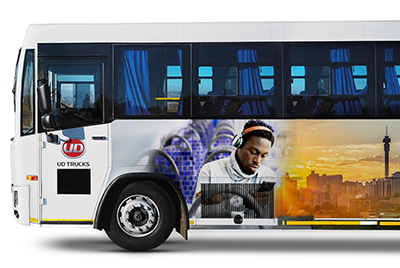 “The growing demand for sustainable and comfortable travel options has been a significant development over the past few years. The Croner Bus is the perfect answer to Africa’s need for an economical, sustainable ride that will reduce carbon footprint,” said Jacques Michel, Senior Vice President, of UD Trucks International Sales.
“The growing demand for sustainable and comfortable travel options has been a significant development over the past few years. The Croner Bus is the perfect answer to Africa’s need for an economical, sustainable ride that will reduce carbon footprint,” said Jacques Michel, Senior Vice President, of UD Trucks International Sales.
UD Trucks has manufactured trucks for more than 60 years. The trucks have also become trusted, so it is natural for the South African market to also introduce buses to the mix. “It is an exciting time for our organisation, a new chapter,” says Filip van den Heede, Managing Director, of UD Trucks Southern Africa. “We are proud to extend our Croner product line into the bus market while still maintaining the same quality, architectural design, and reliability.”
Re-entering the bus market is part of UD Trucks Southern Africa’s product diversification plan. The UD Croner Bus connects rural communities with economic hubs and workers with the workplace. The Croner Bus features USB ports on all seats to accommodate commuters’ ability to stay connected whilst on the move. Both the PKE 280 and LKE 210 buses are based on the same architecture as the South African medium duty leader, UD Trucks Croner.
HAMM’S NEW HC SERIES: Hamm will launch new models of its UN ECE R96 (Tier 3)-compatible soil compactors.
A total of six new HC Series models will be introduced, namely the HC 208 D, HC 208 P, HC 228 D, HC 228 P, HC 268 D, and the HC 268 P, each with a weight of either 20 t, 22 t, or 26 t. All these soil compactors are equipped with a powerful 154 kW engine (UN ECE R96, Tier 3) and the Hammtronic electronic machine management system.
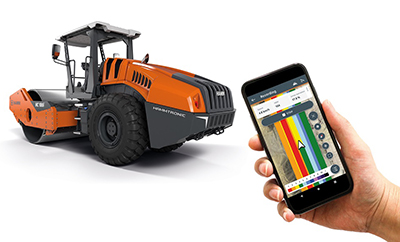 They combine high compaction quality with easy operation and maintenance.
They combine high compaction quality with easy operation and maintenance.
Moreover, there are several optional features available, so customers can select machines that match their requirements. Low maintenance costs and low fuel consumption ensure cost-effectiveness.
The new Hamm compactors can be used for a wide range of stabilization, earthworks, and CBT applications, compacting different types of material. To achieve excellent compaction performance, all new models use a highly efficient Cummins engine with a rated output of 154 kW. The engine complies with the UN ECE R96 (Tier 3) specifications and is fuel-efficient.
The innovative cooling system, in which the cooling air is drawn in from behind the operator’s platform and emitted at the rear, provides an optimized air supply and increases the lifespan of the power packs. It also prevents hot air from reaching the operator’s platform.
Hamm soil compactors come with an ergonomically designed operator’s platform, offering a high degree of comfort as well as all-round visibility that allows an unrestricted view to the rear, the tires, and the surroundings for greater safety on the job site. The soil compactors can be optionally equipped with a cabin featuring heating and air conditioning.
Alternatively, they are available with a canopy. In both cases, a spacious platform provides ample legroom and allows individual adjustment of the seat and steering wheel. A user-friendly operating panel features a clearly designed information display and intuitive operation using international symbols.
Displays for engine RPM and drive speed are standard equipment for the Chinese market. The Hamm Compaction Meter (HCM) for obtaining quick information on compaction progress can be added optionally. High-power LED working lights are another optional feature, generating enhanced visibility.





